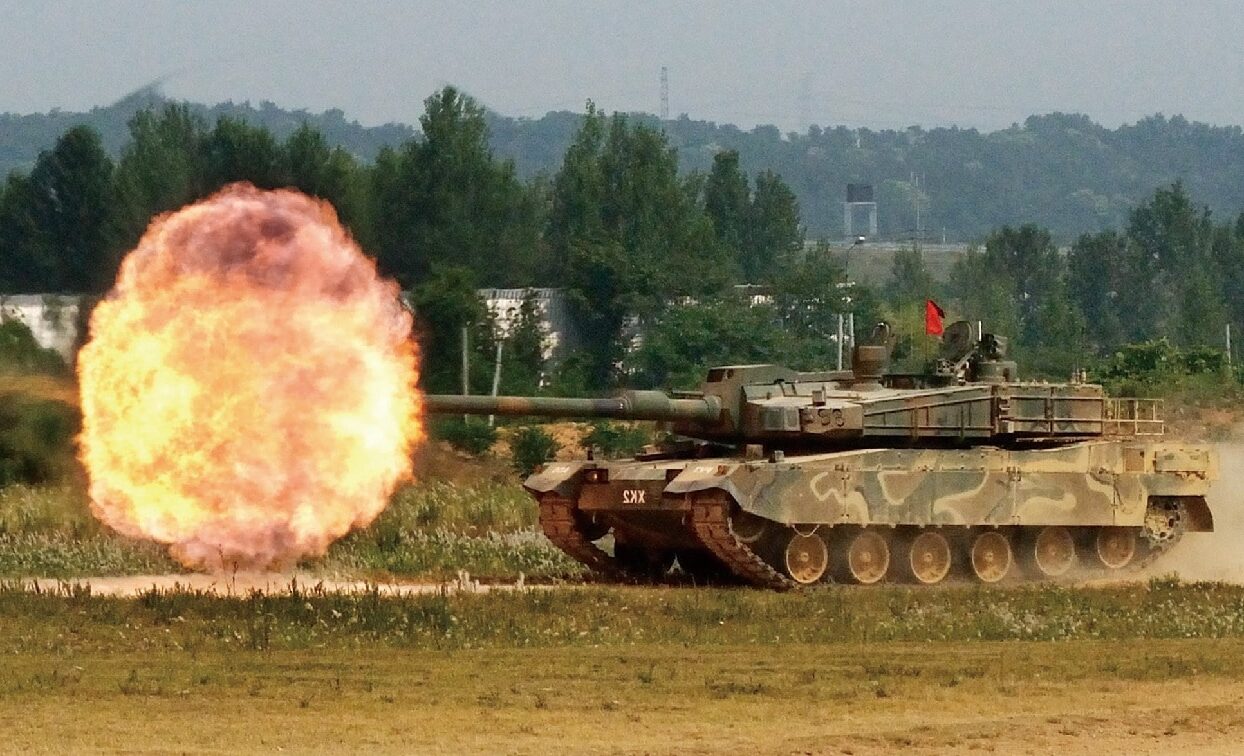This was a great year for South Korea’s arms exporters, and more good years may be on the way. South Korea’s biggest deal was a blockbuster with Poland that resulted in the transfer of 1,000 tanks, almost 700 howitzers, and 48 light attack aircraft.
(Subscribe to Our YouTube Channel Here.)
Korean success in this field is nothing new. Over the past 20 years, the Republic of Korea has developed a sophisticated, productive arms industry to serve its own forces and, increasingly, the export market. South Korean exports have steadily increased since the early 2000s, and they now cover a range of high-technology weapons systems delivered to customers around the world. There are opportunities on the horizon, but there are also risks. South Korea’s arms export industries must carefully navigate shifting technological and geopolitical terrain in order to maximize both the prosperity of its defense industrial base and the security of its military capabilities.
South Korea’s Arms Industry
South Korea was the world’s eighth-biggest arms exporter in 2021, dealing in a wide array of weapons and vehicles. Korea has several big advantages in its effort to carve out a bigger piece of the arms export market, including a high-tech domestic economy and a relatively high level of military spending, which guarantees a baseline of sales for the industry. It has considerable experience in international export markets, and it has one of the world’s most robust shipbuilding industries.
South Korea has carefully navigated the corridor between defense autarky and integration with foreign partners. The Republic of Korea regularly imports high-end American equipment and technology. Integration offers the opportunity for technology acquisition, and it solidifies import and export relationships. These tend to increase the sophistication of the Korean defense industry, while also limiting its freedom in international export markets because of U.S. export controls.
For example, Korean Aersopace Industries developed the T-50 light attack jet in collaboration with Lockheed Martin. The fighter does not include any extremely sensitive technologies, but the simple fact of collaboration gives the United States enormous influence over the marketing and export of the aircraft. Similarly, the presence of significant U.S. technology in the KF-21 stealth fighter project will make it difficult for Seoul to sell the fighter without U.S. approval.
At the same time, Korea has developed domestic duplicates of some technologies in order to avoid export control restrictions on arms sales. For example, one of Korea’s main battle tanks, the K1, is based on the US M1A1, albeit with significant modifications. The second, the more modern K2, uses indigenous technologies in order to avoid licensing issues associated with export. The thousand tanks that Korea sold to Poland were K2s, and the deal did not need to be weighted against U.S. legal restrictions.
Impact of the Russia-Ukraine War
The Russia-Ukraine War will transform the global technology and arms export industries, likely opening up new opportunities for South Korea’s defense industrial base on the export market.
Russia currently cannot fill foreign orders, both because it has been cut off from critical foreign technologies (primarily computer chips) and because its own domestic needs have overwhelmed industrial capacity. This will affect Moscow’s ability to compete on the international export stage, even as general demand increases around the world because of instability caused by the war.
The Republic of Korea can step into this gap, but it will face other competitors, including Turkey, China, India, and of course the United States. Tailoring technology transfer, intellectual property, and export control policies will be critical to success, but Seoul’s willingness to sell to some partners that the U.S. has avoided offers it substantial opportunities for gain.
ROK: A Military Export Superpower on the Rise?
In the future, Korea will have to navigate carefully between an approach that rapidly and effectively integrates international technological developments and one that prioritizes self-sufficiency to capture a greater portion of the export market.
The gains from the export market are immense, both in immediate financial benefit and for the health of the Korean defense industrial base. However, it is absolutely imperative that South Korea retains access to international technology markets, both generally, and specifically in the field defense. This means pursuing policies which trace a narrow corridor between export-driven domestic innovation and international integration. Fortunately, the Republic of Korea is well-positioned to pursue such a set of policies.
Author Experience and Expertise: A 19FortyFive Contributing Editor, Dr. Robert Farley has taught security and diplomacy courses at the Patterson School since 2005. He received his BS from the University of Oregon in 1997, and his Ph. D. from the University of Washington in 2004. Dr. Farley is the author of Grounded: The Case for Abolishing the United States Air Force (University Press of Kentucky, 2014), the Battleship Book (Wildside, 2016), Patents for Power: Intellectual Property Law and the Diffusion of Military Technology (University of Chicago, 2020), and most recently Waging War with Gold: National Security and the Finance Domain Across the Ages (Lynne Rienner, 2023). He has contributed extensively to a number of journals and magazines, including the National Interest, the Diplomat: APAC, World Politics Review, and the American Prospect. Dr. Farley is also a founder and senior editor of Lawyers, Guns and Money.

